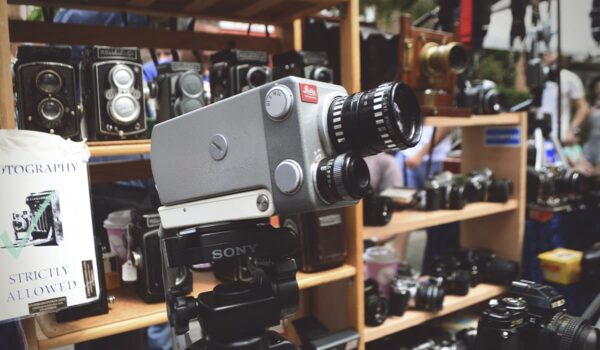Cinematography (from the Greek κινημα, n. κινηματος – motion and the Greek γραφω – to write, portray) is a branch of human activity consisting in the creation of moving images. Sometimes also referred to as cinematograph (from Fr. cinematographe, ust.) and cinematography. The cinematograph was invented in the 19th century and became extremely popular in the 20th century. The concept of cinema includes cinematography, a type of modern visual art, which works are created by moving images, and film industry (film industry) – a branch of the economy, which produces films, special effects for films, animation and demonstrating these works to the public. Works of cinema art are created with the help of cinematographic equipment. The study of cinematography is engaged in the science of film studies.
The influence of cinema on culture and art is indisputable; its influence on politics and economics is huge. In many countries the film industry is a significant branch of the economy. The production of films is concentrated in film studios. Films are shown in cinemas, on television, distributed “on video” in the form of videodiscs.
Historically, cinema appeared as a result of the solution to the problem of fixing the image of a continuous motion of objects on a material carrier and projection of this motion on the screen. The solution to this problem required the creation of several technical inventions: flexible light-sensitive film, chronophotographic apparatus, and the projector of rapidly changing images. Photographer Ivan Boldyrev invented the first flexible photosensitive incombustible film (1878-1881). Later the American inventors G. Goodwin in 1887 and J. Eastman in 1889 invented the flammable celluloid film. The first chronophotographic apparatuses were designed in the 1880s. These included: French physiologist E. Marey’s “photo gun” (1882), the apparatus of French inventor O. Le Perns (1888), British inventors W. Frize-Green and M. Evans (1889), photographer V. Dubuc (1891), “Phonoscope” of French physiologist J. Demeny (1892). The pioneers in creating devices for screen projection of rapidly changing images were: German and photographers O. Anschütz and W. A. Debuch, who created in 1891 and 1892, respectively, the projection apparatus of different design, but with the same name – “Tachiscope”, French inventor E. Reynaud, who created in 1892, the projector called “Optical theater” and inventors IA Timchenko and MF Freidenberg (1893).
The inventions closest to the cinematograph in their technical characteristics are: Edison’s “kinetoscope”, I. A. Timchenko’s machine (1893), J. Demeny’s “chronophotograph” (1893), American inventor J. A. Le Roy’s projector (1894), American inventor W. Latham’s “panoptic” projector (1895), Polish inventor K. Prusinski’s “pleograph” (1894) and others. And already in 1895-1896 devices combining all the main elements of the cinematograph were invented: in France – “cinematograph” of L. and O. Lumiere brothers (1895) and “chronophotograph” of J. Demeny (1895); in Germany – “bioscope” of M. Skladanovsky (1895) and a cinema projector of O. Mester (1896); in England – “animatograph” of R. Paul (1896).
The beginning of cinematography distribution started with shooting and public demonstration of the first short films. On November 1, 1895 in Berlin M. Skladanovsky demonstrated his “bioscope” and on December 28, 1895 in Paris the Lumiere brothers demonstrated their “cinematograph”. During 1896-1897 public demonstrations of short films were made in all world capitals.
